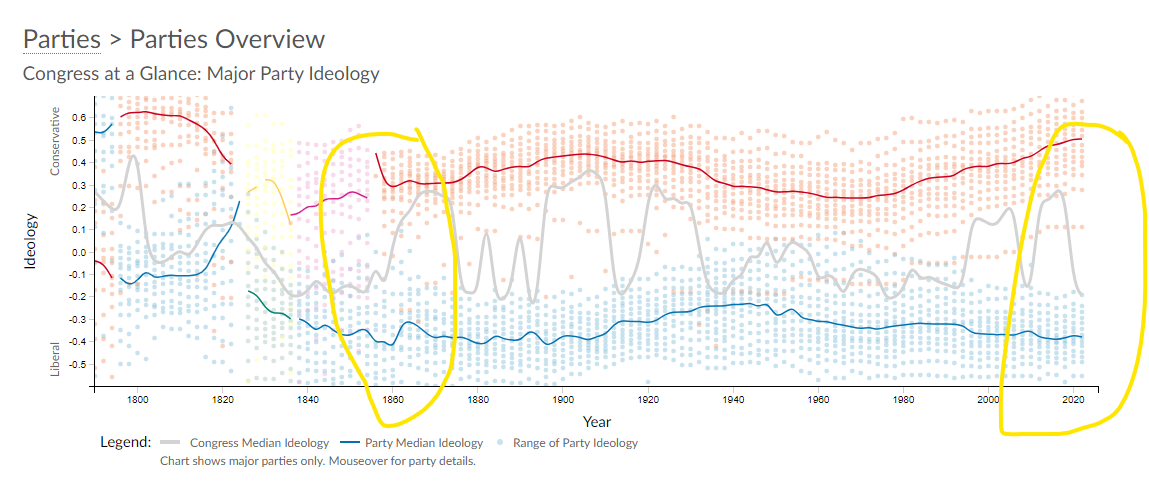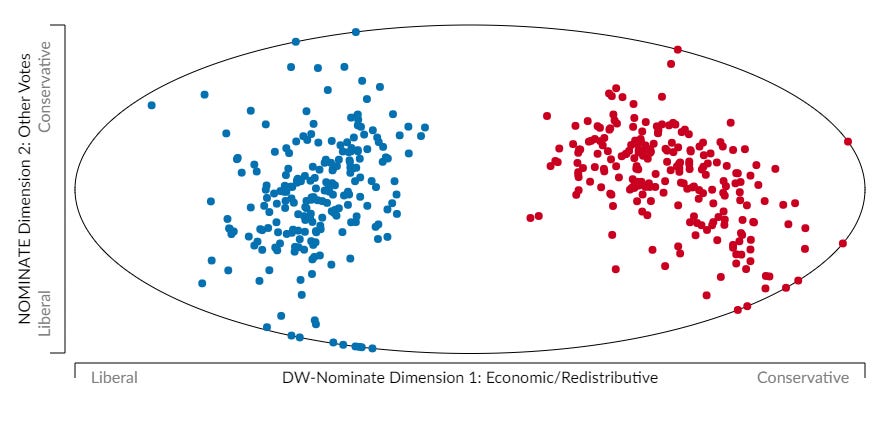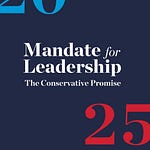What if I was to tell you the Republican Party’s villain-in-chief, the main protagonist in the Republican Party’s “Democrats are socialists” Big Lie, Representative Alexandra Ocasio-Cortez is an ideological moderate serving in a likewise still moderate Democratic Party?
Understandably, you wouldn’t believe me, so I would have to present some pretty compelling evidence to change your mind.
Enter that evidence: VoteView.
What is VoteView?
VoteView is a data analysis tool built by a group of now famous political scientists that measures the ideological behavior of members of Congress, from it’s very first session to the current 118th.
It does so in an innovative way. Rather than look at members’ campaign platforms, policy position memos, ads, and stump speeches for their stated ideology, VoteView populates its ideology scores using the non-unanimous roll call votes of members of Congress.
Each vote, on each contentious bill, by each member of the House, and each senator, enters a model as a series of meaningless 0s and 1s which indicate whether each member who voted on a vote voted yeah or nay.
This means the model calculates an ideological score without even knowing who the member is, what each vote was about, which party the member serves in, or whether they serve in a swing or safe seat.
The scores range from -1 to 1 with -1 being the most liberal score and 1 being the most conservative. I
It is important to understand how to interpret VoteView scores. -1 to +1 is a narrow scale, the difference so between a 0.5 score and a 0.8 score is substantial! In VoteView a score equal or less than 0.5 (positive or negative) is a “moderate” score. A score like positive or negative 0.8 means the member is a strong ideologue.
Unlike member scores from GovTrack, VoteView is blind to the topic of the vote AND (and this is very important) plots ideology for each member as they relate to every other member of both parties.
This means that we can get a full, largely unbiased, measurement of each member’s ideology, but we can also measure ideological change across both time and chamber of Congress (House or Senate). In plain English, that means we can compare how polarized Congress has been across different points of America’s 236 years of constitutional history.
As you can see from the graph below (which does not yet include the current 118th session) the ideological distribution of each party in the House and Senate has changed considerably across time. The gaps between the red line (Republicans) and the blue line (Democrats) have narrowed and enlarged at different points of American political development. A large gap between the red and blue lines means high levels of polarization.
Now, look closely at the two yellow loops I marked out and you will see we are currently as polarized as we were in the 1850s heading into Civil War.
Good times!
You should also be able to see that Republicans have moved further to the right than Democrats have moved to the left. The data don’t lie: Republicans have polarized more than Democrats in Congress.
Mapped Ideology of the Legislative Branch: 1st session to the 117th Session
Now, lets take a look at what VoteView data can tell us about the ideological make-up of the 118th Congress, our current Congress.
Ideology of the 118th House of Representatives
Ideology of the 118th Senate
What you are seeing above are two plot graphs that show the ideology scores for each of the 435 current members of the House and 100 members of the Senate. Again, the blue dots are Democrats, the red dots are Republicans.
The axis of relevance here is the X axis (the bottom axis) which displays a dot for each member of each respective chamber to show where they fall along that -1 to 1 ideology score range.
Two things that should stand out are the number of red dots versus blue dots that are on the respective ellipses (ends) as well as proximity of each cluster of dots to the middle of the plot because that middle reflects ideological scores close to 0 (perfect moderation) while the ellipses are scores that max out as very conservative/very liberal.
If you look closely, you should see a clear asymmetry between the parties in terms of ideological extremism.
Here’s a fun fact: there are 7 Republican senators who are more conservative than Elizabeth Warren is liberal (Schmitt, Tuberville, Paul, Lee, Vance, Cruz, Braun) and although Warren is by far the most liberal Democrat in the senate (liberal score of -0.752) she is nowhere near as liberal as Mike Lee and Rand Paul are conservative (0.891, respectively). She is an outlier, they are an entire caucus.
As for AOC?
AOC is just the 180th most liberal Democrat in the House of Representatives. Given that there are only currently 212 Democrats, that’s pretty damn moderate!
Now, you might be wondering, “Rachel, what does this even mean?” It means that America doesn’t have a “both sides” problem, it has a Republican Party problem.
And that, my friends, brings us to my conversation with David Corn about his recent book American Psychosis: A Historical Investigation of How the Republican Party Went Crazy, which is the feature of this Finally Back from Summer pod.
As many of you know, Corn is the DC Bureau Chief of Mother Jones magazine and an intrepid investigative reporter who’s so inside the Beltway he’s outside it. What you may not know is that David offers a newsletter called Our Land which you can subscribe to here.
So, how exactly did the Republican Party go crazy?
It’s a long story that begins…
BIG NEWS!!!
My magnum opus Hit ‘Em Where It Hurts: How to Save Democracy by Beating Republicans at their Own Game (Crown 2024) is available for pre-order RIGHT NOW!






















Share this post